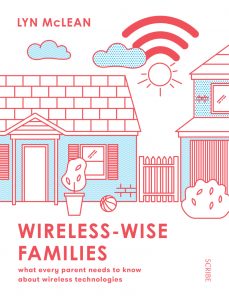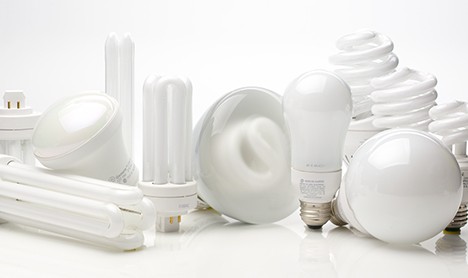How to Connect to the Ethernet – Computer, Phone and Tablet
Connecting to the Ethernet has many benefits, no matter who you are or what your reason is.
- If you are looking for a safer way to use the internet than wifi – this if for you.
- If you want to have a good connection for video calls or games – this is for you.
- If you want to stream movies, etc more smoothly – this is for you.
How To Connect to the Ethernet – Simply, Cheaply and For Your Health
Here are the simple step-by-step instructions to connect to the Ethernet.
I am going to assume zero knowledge and explain things as simply as possible. Let’s start with some definitions.
Definitions
What is “Ethernet”?
Simply put, the Ethernet is your cabled internet connection.
It is the same as LAN (local area network).

The connection is an RJ-45 – seen here. (Please bear in mind that the cable and plug is often blue or yellow, but may be different colours. Do look at the plug part of it – this is the important bit.)
To the right here, is an image of an Ethernet cable with a close up of the plug.
EMF Basics
EMF
EMF is the abbreviation for electromagnetic fields. There are many different types of EMF.
Wireless
Wireless technology depends on radio frequency electromagnetic energy (RF EME). We do sometimes use more complicated terms. But everything wireless is either HF or RF.
Wired
Wired technology can create a variety of different types of EMF.
If it is wiring or appliances connected to the mains it is “ELF AC” EMF. This is extremely low frequency alternating current EMF. This is man-made. Because it goes back and forth (thus “alternating”) it creates magnetic fields and electric fields that are often high, and problematic for many people.
If it is something that runs on battery, it is not alternating, and generally the fields are lower.
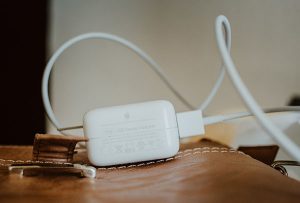
Something You May Need – Your “Charging Cable”

To simplify this post, I wanted to explain what I mean here by a “charging cable.”
All devices and phones come with a cable to charge them when the battery gets low. Most of them are made up of a cable that is inserted into a plug that you put into a powerpoint.
When you separate them out, you will have two parts – the plug and the charging cable. The charging cable will have a USB plug on the end.
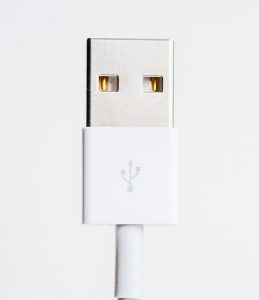
Goal
The goal is to reduce exposure to wireless EMF and also the AC EMF.
As such, we are looking to work from batteries, and reduce exposure to other EMF to levels as low as possible.
Another good reason is to have a steady connection which aids smooth streaming.
EXPERT TIPS
- Once you are connected, please make sure you turn off Bluetooth, 3G/4G/5G and wifi.
- Your phone, tablet or device will be connected to the internet and can be used in FLIGHT MODE. This is recommended.
- Be aware that when your phone is in FLIGHT MODE you cannot make or receive calls. You can send and receive text messages.
Here’s How to Use the Internet via Ethernet
Modem or Router
Firstly, your modem/router needs to be one that doesn’t emit HF/RF. Depending on where you are and if you are connected to the NBN yet or not, the type of modem will vary.
Generally, you can get a modem/router that cannot be used wirelessly from online stores.
When looking to purchase one, you need to ask a key question – which is actually the opposite of what you want.
Can I use this wirelessly?
By asking this, you find out if it emits HF/RF. If the answer is, “No” – then this is GREAT. If the answer is “Yes” – you need to keep looking.
(The reason to ask this way around is that any modem/router can be used via cable/ethernet – so you won’t find out if it emits HF/RF EMF.)
Computer
Simply plug your ethernet cable into your modem/router and into the socket (plug hole) on your computer.
** be sure to turn off wifi, bluetooth, etc on your computer as well
(The reason to switch these off is that even if you are not using them, if they are on, they are searching for a signal.)
Tablets, Phones and Other Devices
This is a tiny bit more complex, but very very easy.
You need to determine if you have an Apple product or an Android product. Once you have that figured out, you can follow these simple steps.
Apple (iOS)
The more recent Apple phones and tablets have a “lightning” connection. I will walk you through both options – so let’s do one at a time.
Lightning to Ethernet
This is quite a small plug and on your device, it will look like this:
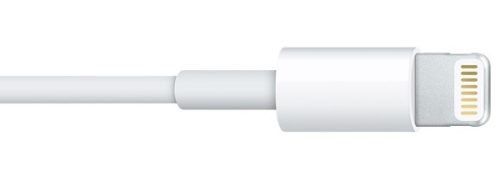
This is where it plugs into:

You will need three parts so that you can connect these to the internet via ethernet.
- A Lightning Ethernet Connector for Devices
STEP 1 What you do is plug your Ethernet Connector for Devices into your device/phone/tablet.
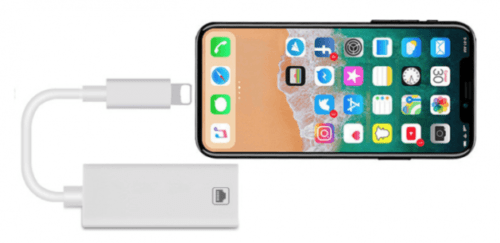
STEP 2 Plug the ethernet cable into your Ethernet Connector for Devices.

Ultimately, you and up with a connection that looks a bit like this…

Schematically this connection is:
modem/router ->Ethernet Connector for Devices -> Device/Phone/Tablet
Non-Lightning Connections
In this instance, you will follow the instructions for the Androids – below.
Androids (and Non-Lightning Connections)
Note: not all Androids support Ethernet use.
** check with the manufacturer before purchasing equipment **
You will need three parts so that you can connect these to the internet via ethernet.
- Your charging cable
- A female to female USB adaptor like this one
- An internet adaptor like this one
STEP 1 What you do is plug your charging cable into your device/phone/tablet.

STEP 2 Then, attach the female to female USB adaptor on the end.
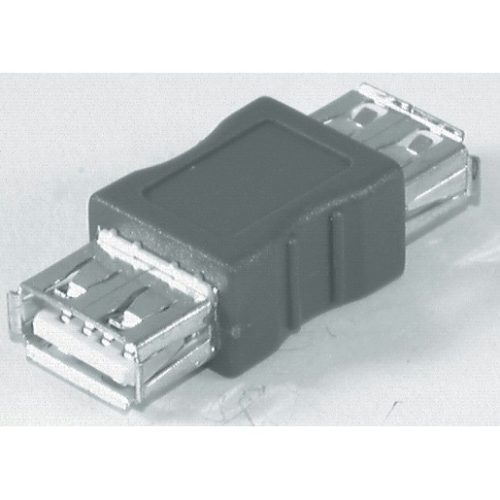
STEP 3 Next you will plug the internet adapter into the female to female USB adaptor.
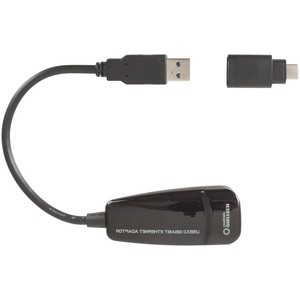
STEP 4 Finally, you will plug your ethernet cable into the end of the internet adaptor.
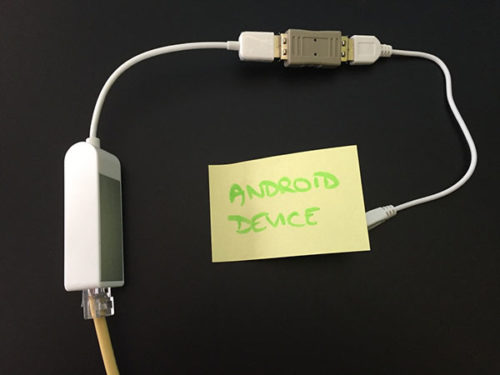
Schematically this connection is:
modem/router -> Ethernet Adaptor -> female to female USB Adaptor -> Charging Cable -> Device/Phone/Tablet
I hope you find this really helpful and easy to follow.
Here’s to the safer and smoother use of technology! 🙂



